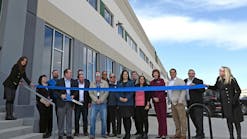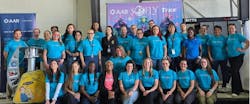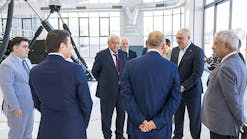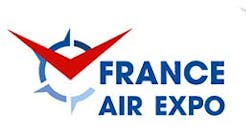ATEC Survey Underscores Aviation’s Opportunity To Create Pipeline Of Technicians
JENKS, Oklahoma -- A focused effort to provide clear and attractive paths from aviation technician programs to the industry would help fill the demand gap for qualified maintenance employees, new survey data reveals.
The survey, conducted by the Aviation Technician Education Council, found that 25% of all graduates from FAA-certified aviation maintenance technician schools (AMTS) do not end up pursuing aviation careers. This means that from the respondent group alone—47 of the 178 FAA-certificated AMTS—roughly 750 graduates in 2015 were lost to other industries.
Further, 40% of graduates don’t sit for the exam for the FAA airframe and powerplant (A&P) license they’ve worked to earn. While some graduates may obtain mechanic certification later, the survey results help quantify the level of workforce bleed plaguing aviation maintenance.
“The loss of qualified technicians to competing industries is a significant concern for airlines, business aviation operators, and aviation maintenance providers,” said Ryan Goertzen, President of ATEC and Chief Aviation and Academic Officer of Spartan College of Aeronautics and Technology. “This survey shows that there is a significant low-hanging-fruit opportunity to help bridge the gap between our industry’s schools and its employers.”
Aviation’s growth is driving demand for more technicians. Boeing’s latest workforce forecast projects that 679,000 additional technicians will be needed in the next 20 years to support the airline fleet alone. More than 110,000 of these will be needed in North America.
While there is no question that the aviation industry is facing a technician shortage, getting a handle on the issue’s scope—the first step in solving the problem—is a challenge. ATEC is leading an effort to more accurately define aviation maintenance jobs and have the updated definitions apply to government classifications. This will help quantify the number of certified technicians versus total aviation maintenance employees, for instance.
ATEC is spearheading several grassroots efforts that link aspiring technicians with employers. The association is drafting guidance to support career-pipeline programs such as dual-enrollment programs with high schools. ATEC also is holding several workforce development and employer-employee networking events at its 2017 annual conference, Apr. 1-3 in Seattle.
Among the ATEC survey’s other notable findings:
* AMTS are not just producing A&P mechanics. The schools are educating specialized aviation maintenance technicians outside of their A&P programs. Of those educational institutions reporting, half of them provide stand-alone, aviation-related programs, including avionics (24%), composites (15%), welding (15%), unmanned aircraft systems (14%), and non-destructive testing (12%).
* AMTS respondents reported a student-placement rate of 76% upon graduation—another indication of increased demand for A&Ps.
* The vast majority of respondents (70%) expect their institution’s enrollment to increase in the following year.
“The survey quantifies what we already know, namely that schools are reacting to the needs of company employers, notwithstanding regulatory limitations on what they can teach, and that we need to do some work to ensure students retain the interest that drew them to aviation in the first place,” said Crystal Maguire, ATEC Executive Director. “The council will therefore focus on development and cultivation of education-employer relationships to enhance curriculum, better equip schools and create career paths for future airmen.”
Out of the 178 AMTS in FAA’s database 47 provided complete responses to the survey. Of the schools that responded, 65% were public institutions (in line with the actual demographic—78% of AMTS are public schools). The AMTS community is composed mostly of smaller institutions, with 62% of survey respondents reporting fewer than 50 graduates in 2015. The average graduation rate was 70%.
For more information on the survey, see the online summary or contact ATEC at http://www.atec-amt.org/.
About ATEC: ATEC is a partnership of aviation maintenance training schools and employers. The council is dedicated to promoting and supporting technician education through its communications, advocacy programs and networking events.





